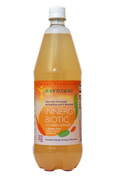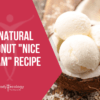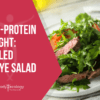Natto – The Little Known Food with Big Benefits for Your Heart and Skin

Haven’t yet tried natto? Body Ecology will explain how this fermented soybean dish from Japan increases all-around wellness and youthfulness, and why you should incorporate it into your diet.
If you want beautiful skin, a healthy heart and strong bones, it’s time you try vitamin-rich natto.
Natto is a traditional Japanese dish made from soybeans fermented with Bacillus subtilis1 . Keep in mind that we do not recommend eating soybeans unless they are fermented.
The key element in natto is the fermentation of the soybeans, which make them easier to digest while increasing your body’s ability to absorb nutrients.
Fermented foods and drinks, such as natto, are the cornerstone of the Body Ecology Diet because they are a great source of probiotics.
Natto has a long history as a super food. It has a stringy consistency, strong smell and an acquired taste.
Primarily eaten as a breakfast staple in Japan for over 1,000 years, natto is a great source of protein and is low in calories. But it goes even further to enhance your inner and outer health.
Natto and Vitamin K
Unlike many foods that are only rich in Vitamin K1, natto is rich in both types of Vitamin K.
Vitamin K1 is found in green leafy vegetables and makes up about 90 per cent of the vitamin K in a typical Western diet. Vitamin K2 isn’t produced in plants, but by various types of bacteria. It makes up only about 10 per cent of Western vitamin K consumption2.
Natto increases the health and strength of your skin, heart and bones.
Here are some of the many health benefits of natto:
- Natto is especially rich in vitamin K2, which could reduce bone loss in post-menopausal women by as much as 80 per cent3
- Fermented soybeans such as natto contain Vitamin PQQ, which is very important for the skin.PQQ in human tissues is derived mainly from diet.4
- Vitamin K is repeatedly shown to reduce blood clots by slowing arterial calcification, enhance liver function and encourage the flow of urine.
- Vitamin K2 has a better bioavailability that K1. Studies show that this molecule remains in the body for a longer period and is more effective at lower doses, hence is much more bio-effective.5
- Additionally, natto suppresses immune reactions.6

Ready to add probiotic-rich fermented foods and drinks to your diet?
Sipping just 2 oz. of InnergyBiotic helps boost your energy, strengthen your immunity and provides a good source of vitamin K2. Learn more about InnergyBiotic and get yours today!Tips for Enjoying Natto
Eating natto as a food is far better than taking the supplement version, which is less potent and less effective. You can find it at Asian markets and some health food stores.
While fermented foods and drinks all have an acquired taste, natto may take more time to get used to than cultured vegetables or probiotic liquids. But the taste is definitely worth acquiring!
When you take the natto out of its package, pour it into a bowl and, using a fork, whip it about 50 times until it gets kind of foamy. In Japan, natto is commonly served over rice but instead, we recommend you add: plenty of cultured vegetables, mustard (made with apple cider vinegar), wheat free tamari, scallions and if you like, a little wasabi.
Even if you’ve experienced soy allergies, natto may not bother you. The fermentation process breaks down the difficult-to-digest proteins that many are sensitive to, rendering them unrecognizable as a problem food to your immune system!
Sources:
- Madigan M, Martinko J (editors). (2005). Brock Biology of Microorganisms (11th ed.). Prentice Hall. ISBN 0-13-144329-1.
- Study strengthens Vitamin K1’s heart benefits: http://www.nutraingredients-usa.com/Research/Study-strengthens-Vitamin-K1-s-heart-benefits
- Journal of Nutrition, May 2006 (Vol. 136, pp. 1323-1328): http://www.nutraingredients-usa.com/Research/More-evidence-for-natto-vitamin-K-bone-health-benefits
- T Kumazawa, K Sato, H Seno, A Ishii, O Suzuki (01 April 1995). “Levels of pyrroloquinoline quinone in various foods”. Biochem. J. 307 (Pt 2): 331–333. PMID 7733865. http://www.pubmedcentral.nih.gov/articlerender.fcgi?artid=1136652. Retrieved on 2007-10-20.
- Vitamin K1 and K2: http://www.nattopharma.com/?c=VITAMIN%20K2&s=Vitamin%20K1%20and%20K2
- Kuniyasu Soda, Yoshihiko Kano, Takeshi Nakamura, Keizo Kasono, Masanobu Kawakami and Fumio Konishi (July 2005). “Spermine, a natural polyamine, suppresses LFA-1 expression on human lymphocyte”. The Journal of Immunology. 175 (1): 237–45. PMID 15972654.








